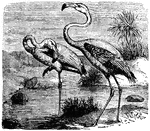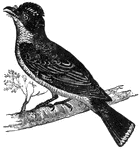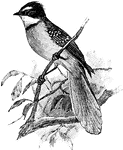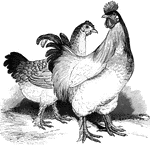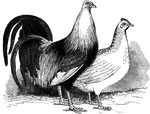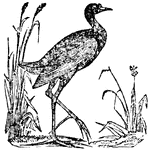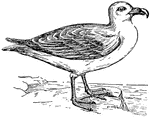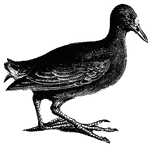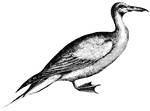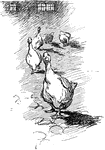266 illustrations of birds including: falcon, finch, flamingo, fly-catcher, fulmar, gadwall, gallinule, gannet, garganey, gnatcatcher, goat-sucker, goldfinch, goosander, goose, goshawk, grallatore, grebe, grosbeak, guan, guillemot, guinea fowl, guitguit, and gull
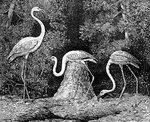
American Flamingo
"Phoinikopteros ruber. American Red Flamingo. Adult: Plumage scarlet, the primaries and most of the…

Flamingoes
The American flamingo stands about five feet tall, and is found throught tropical America, including…
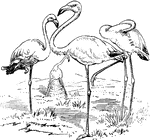
Flamingoes
Gregarious wading birds, usually 3-5 feet in height, found in both the Western and Eastern Hemisphere.
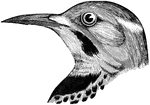
Flicker
"Colaptes auratus. Golden-winged Woodpecker. Pigeon Woodpecker. Flicker. Yucker. High-holder. Back and…
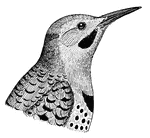
Northern Flicker
The Northern Flicker (Colaptes auratus) is a medium-sized member of the woodpecker family. It is native…
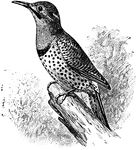
Northern Flicker
The Northern Flicker (Colaptes auratus) is a bird in the Picidae family of woodpeckers.
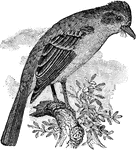
Ash-throated Flycatcher
"Myiarchus cinerescens. Ash-throated Crested Flycatcher. Rather olivaceous-brown above, quite brown…

Boat-billed Flycatcher
The Boat-billed Flycatcher, Megarynchus pitangua, is a passerine bird. It is a large tyrant flycatcher,…
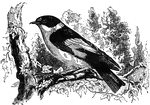
Collared Flycatcher
The collared fly-catcher, a bird which feeds on insects and the occaisional small vertebrate.

Derby Flycatcher
"Pitangus derbianus. Derby Flycatcher. Under parts light wood-brown, with an olive tinge; wings and…
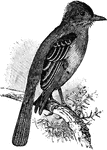
Great Crested Flycatcher
"Myiarchus crinitus. Great Crested Flycatcher. Decidedly olivaceous above, a little browner on head,…
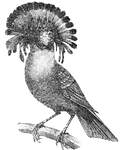
King Flycatcher
The fly-catcher proper feeds on insects, which it catches on the wing with vivacity and agility which…
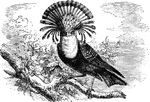
King Flycatcher
An impressive South American species of fly-catcher, with a transverse crest of reddish-fawn feathers.
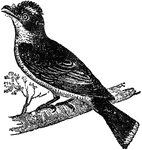
King Flycatcher
An American bird, also called bee martin and flycatcher. It is about eight inches long, the extended…

Paradise Flycatcher
"Terpsiphone paradisi, Paradise Flycatchers, have fine crests, shorter in the female; while fleshy wattles,…
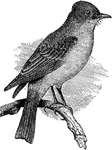
Pewit Flycatcher
"Sayiornis fusca. Pewit Flycatcher. Water Pewee. Pewit. Phaebe. Dull olivaceous-brown, the head much…
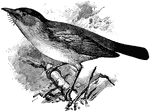
European Pied Flycatcher
The European Pied Flycatcher (Ficedula hypoleuca) is a small passerine bird in the Muscicapidae family…
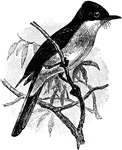
Restless Flycatcher
The Restless Flycatcher (Myiagra inquieta) is a passerine bird in the Monarchidae family of Monarch…

Savannah Flycatcher
Found in the southern United States, the Savannah fly-catcher is notable for its long, forked tail.

Scissortailed Flycatcher
The Scissortailed Flycatcher (Milvulus forficatus) is a tyrant flycatcher in the Tyrannidae family.
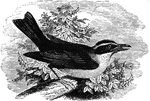
Spoonbill Tyrant Flycatcher
The spoon-bill tyrant fly-catcher has a large, thick bill, which it uses for feeding on butterflies.

Swallow-tailed Flycatcher
"Milvulus forficatus. Swallow-tailed Flycatcher. Scissor-tail. Crown patch orange or scarlet. General…
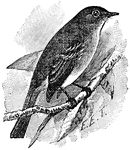
Traill's Flycatcher
Traill's Flycatcher (Empidonax trailli) is a bird in the Tyrannidae family of tyrant flycatchers.
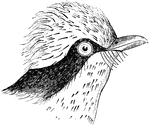
Vermilion Flycatcher
"Pyrocephalus rubineus mexicanus. Vermilion Flycatcher, Adult male: Pure dark brown, including stripe…
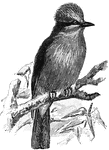
Vermilion Flycatcher
In the males, they have a full globular crest, and the hole under parts flaming red, the back, wings,…

Flysnapper on a Branch
The flysnapper or phainopepla (Phainopepla nitens) is a bird in the Ptilogonatidae family of silky-flycatchers.
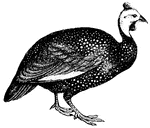
Guinea Fowl
Guinea fowls have small heads for their size; beak and neck short; the tail equally short and drooping.
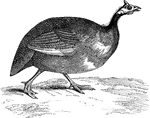
Guinea Fowl
The Guinea-fowl (or pintado) was originally native to Africa, but was introduced to American poultry-yards.
Kinds of Fowl
Kinds of fowl. Far left: light Brahma, behind Brahma: bantam, middle: long-tailed oriental fowl, right:…
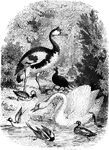
Group of Water Fowl
A group of water-fowl at a bank, with a fountain and pond visible in the background.
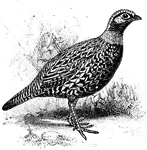
Black Francolin
The Black Francolin (Francolinus francolinus) is a bird in the Phasianidae family of pheasants.
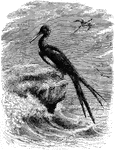
Frigate Birds
"Tachypetes aquilus. Frigate. Man-of-War Bird. brownish-black, glossed with green of purplish, duller…
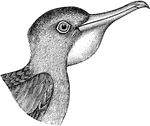
Frigatebird Head
"Tachypetes aquilus. Frigate. Man-of-War Bird. brownish-black, glossed with green of purplish, duller…
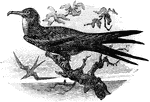
Ascension Frigatebird
The Ascension Frigatebird (Fregata aquila) is a large seabird in the Fregatidae family of frigatebirds.
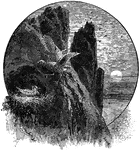
Fulmar and Nest
"Fulmarus. Fulmar. Adult: White; mantle pale pearly-blue, restricted to back and wings, or extending…
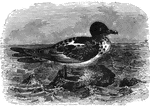
Cape Fulmar
The cape petrel or fulmar is about the size of a small duck and inhabits the southern seas.
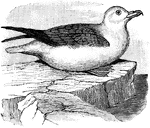
Northern Fulmar
"The Northern Fulmar (Fulmarus glacialis) is a bird in the Procellariidae family of seabirds." -Whitney,…

Slender-billed Fulmar
"Priocella tenuirostris. Slender-billed Fulmar. Adult: Plumage white, with clear pearly-blue mantle,…

Furnarius Rufus and Oven-Bird (Synallaxis Frontalis)
"Oven-birds live singly or in pairs, in the plains of Chili, Brazil and Guiana."

Gadwall
The gadwall (or gray duck) is nineteen inches long, and is found throughout Europe and America, as well…

Gadwall Duck
The Gadwall (Chaulelasmus streperus) is a widely distributed duck, appearing throughout Europe and N.…
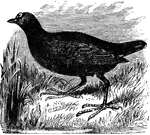
Gallinule
"Gallinula. Gallinules. Water Hens. Mud Hens. Bill not longer than head, stout at base, tapering, compressed,…
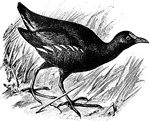
Florida Gallinule
The Florida Gallinule (Gallinula chloropus cerceris) is a subspecies of the Common Moorhen, a bird in…
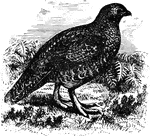
Red Game of Britain
"Lagapus. The densely-feathered feet resemble those of rabbits. No particular feathers on head or neck.…
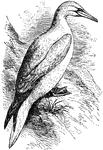
Gannet
"The Pelecanus bassanus f Linnaeus and the Sule bassana of modern ornithologists, a large sea-fowl long…

Gannet
"The Gannet (S. bassana) has slate-grey wing-quills, purplish-grey bill, reddish feet and naked parts."…
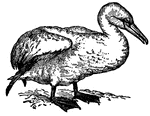
Gannet
Also known as a Solan Goose (Sula bassana), the Gannet is a large marine bird which nests in scattered…

Northern Gannet
The Northern Gannet (Morus bassanus) is a bird in the Pelecaniformes order of waterbirds. It was once…
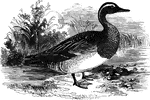
Garganey
Also known as the summer teal, the garganey is sixteen inches long and found in Southern Europe and…

